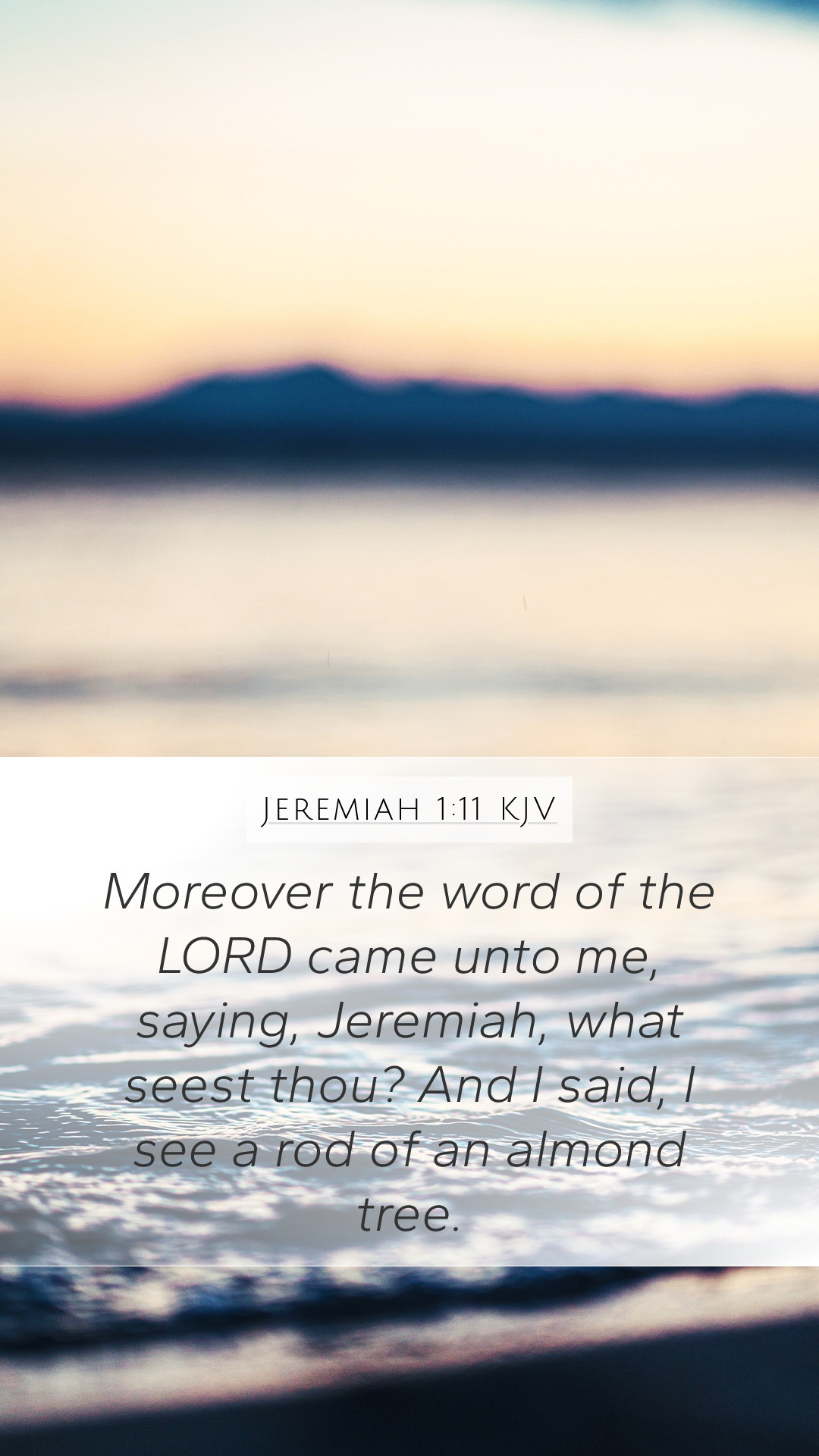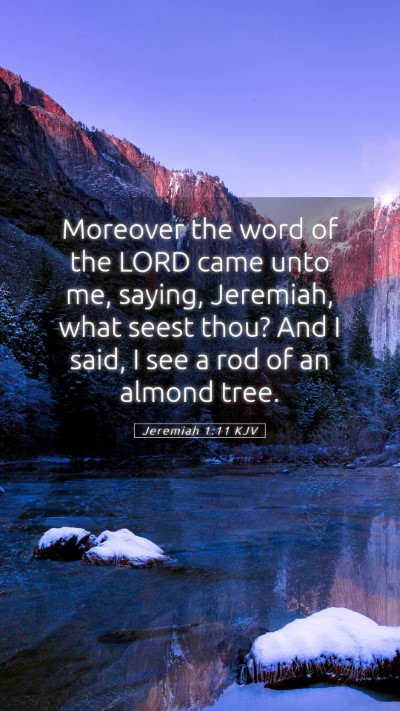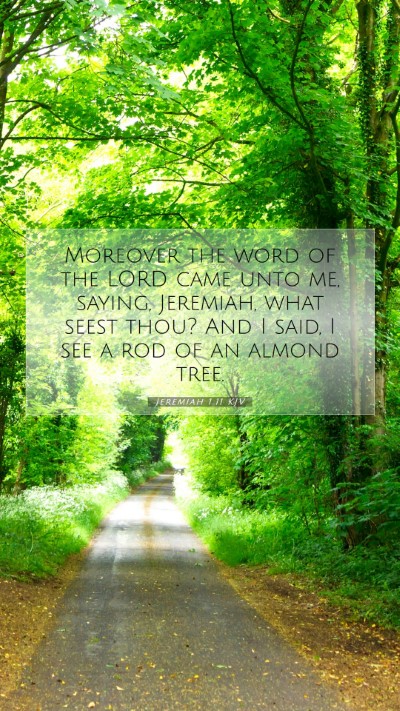Meaning and Interpretation of Jeremiah 1:11
Jeremiah 1:11 states, "The word of the Lord came to me: 'What do you see, Jeremiah?' 'I see the branch of an almond tree,' I replied." This verse stands at the beginning of Jeremiah's prophetic calling, serving as an introduction to the themes of divine communication and the significance of prophetic visions.
Overview and Context
In this verse, God initiates a dialogue with Jeremiah, highlighting His desire to engage with the prophet. The almond tree, or "shaqed," symbolizes watchfulness and vigilance, as it is one of the first trees to bloom in spring. This interaction is not just about the vision itself but also reflects God's ongoing revelation to His chosen servants.
Commentary Insights
-
Matthew Henry's Commentary:
Henry emphasizes the importance of God’s inquiry, illustrating that it is God who reveals truths to His prophets. The question posed to Jeremiah indicates that the prophet must recognize and respond to God’s revelations, which are crucial to understanding His plans.
-
Albert Barnes' Notes:
Barnes highlights that the almond tree represents God's readiness to fulfill His word. He explains that the name for the almond tree in Hebrew is akin to the verb meaning "to watch." This suggests that God is vigilant and attentive to ensure that His word is fulfilled in the life of His people.
-
Adam Clarke's Commentary:
Clarke offers a detailed description of the almond tree's characteristics, linking its early flowering to God's promptness in judgment and action. He emphasizes that Jeremiah's vision signifies the imminent fulfillment of God's promises and prophecies—a theme central to the Book of Jeremiah.
Theological Implications
This verse not only establishes Jeremiah's prophetic role but also reflects a broader theological theme of God’s sovereignty and His plans for nations and individuals. The almond tree's symbolism serves as a reminder of God's faithfulness in bringing His words to fruition.
Applying Jeremiah 1:11 to Daily Life
Understanding the application of this verse encourages believers to remain attentive to God's word in their lives. Just as Jeremiah was called to see and respond to God's revelations, individuals today are invited to cultivate a spirit of watchfulness and receptiveness to divine guidance.
Cross References
- Amos 3:7: "Surely the Sovereign Lord does nothing without revealing his plan to his servants the prophets."
- Hebrews 1:1-2: "In the past, God spoke to our ancestors through the prophets at many times and in various ways, but in these last days he has spoken to us by his Son."
- Ezekiel 1:1: "In my thirtieth year, in the fourth month on the fifth day, while I was among the exiles by the Kebar River, the heavens were opened and I saw visions of God."
Conclusion
Jeremiah 1:11 is a profound verse that encapsulates the essence of prophetic ministry and God's communication with humanity. In studying this verse, knowing its meaning, interpretations, and applications helps believers gain a more profound understanding of their relationship with God and His purposes. Engaging with this text can enrich Bible study groups, online Bible study sessions, and personal devotionals, leading to deeper biblical insights and spiritual growth.


